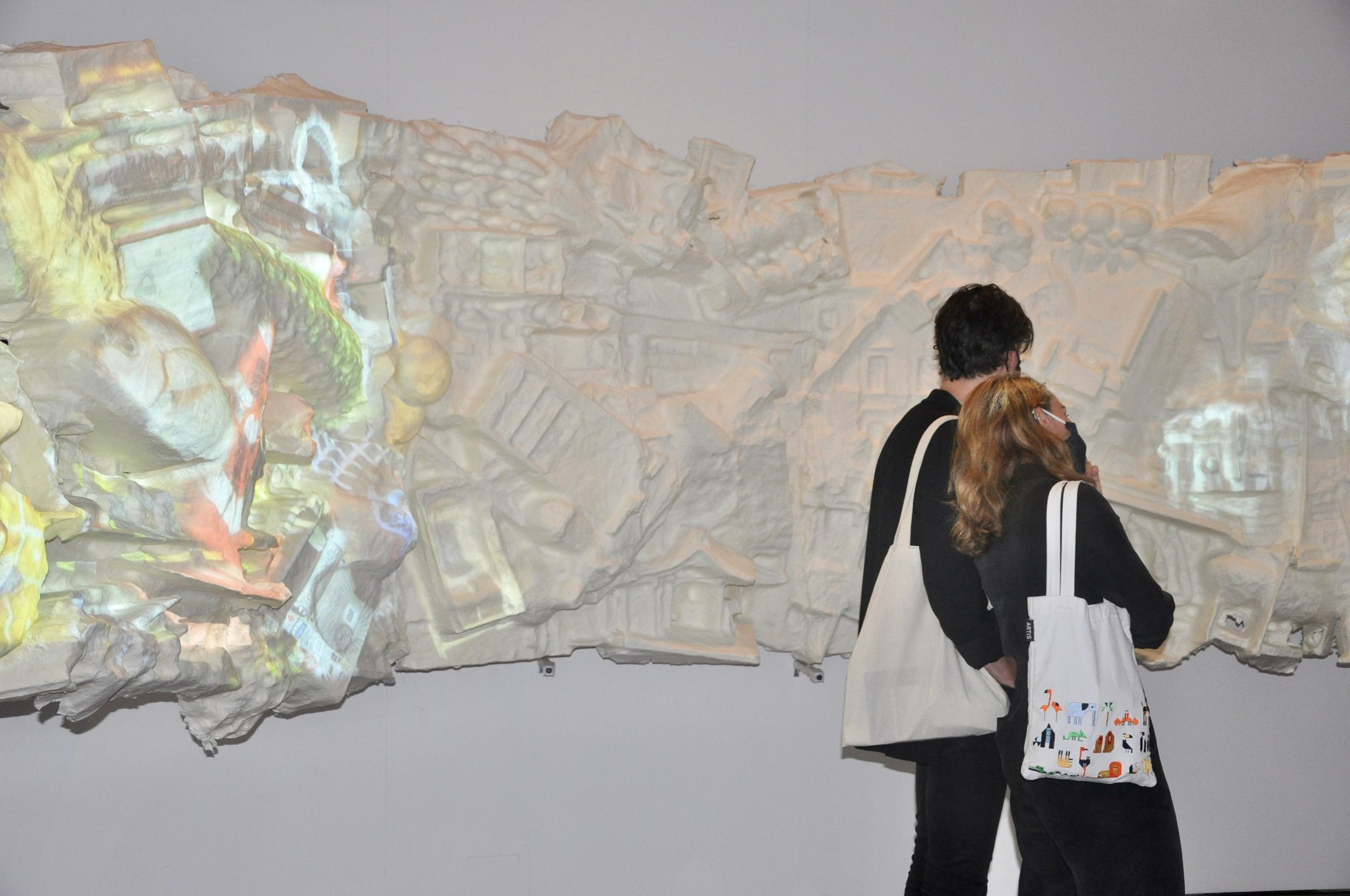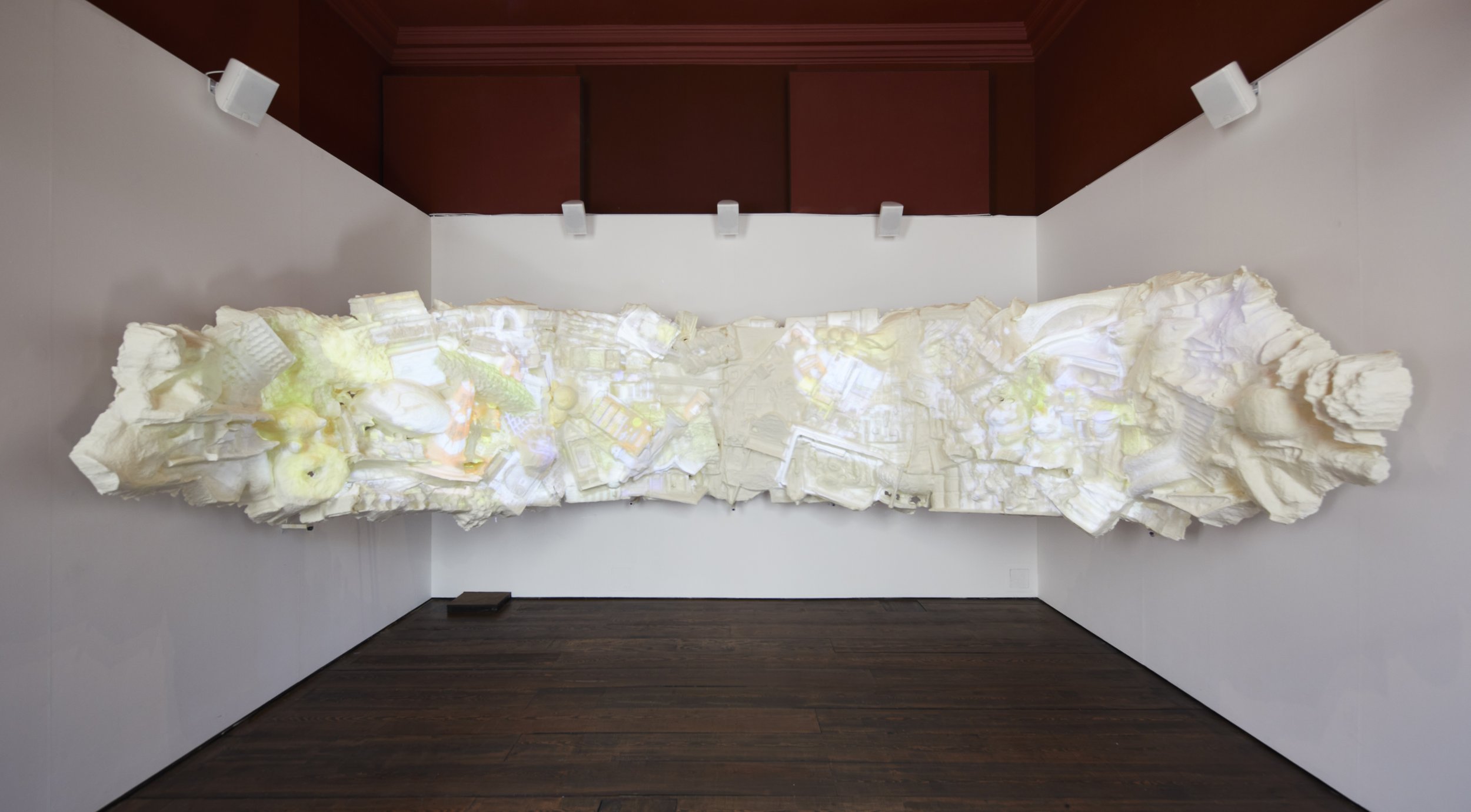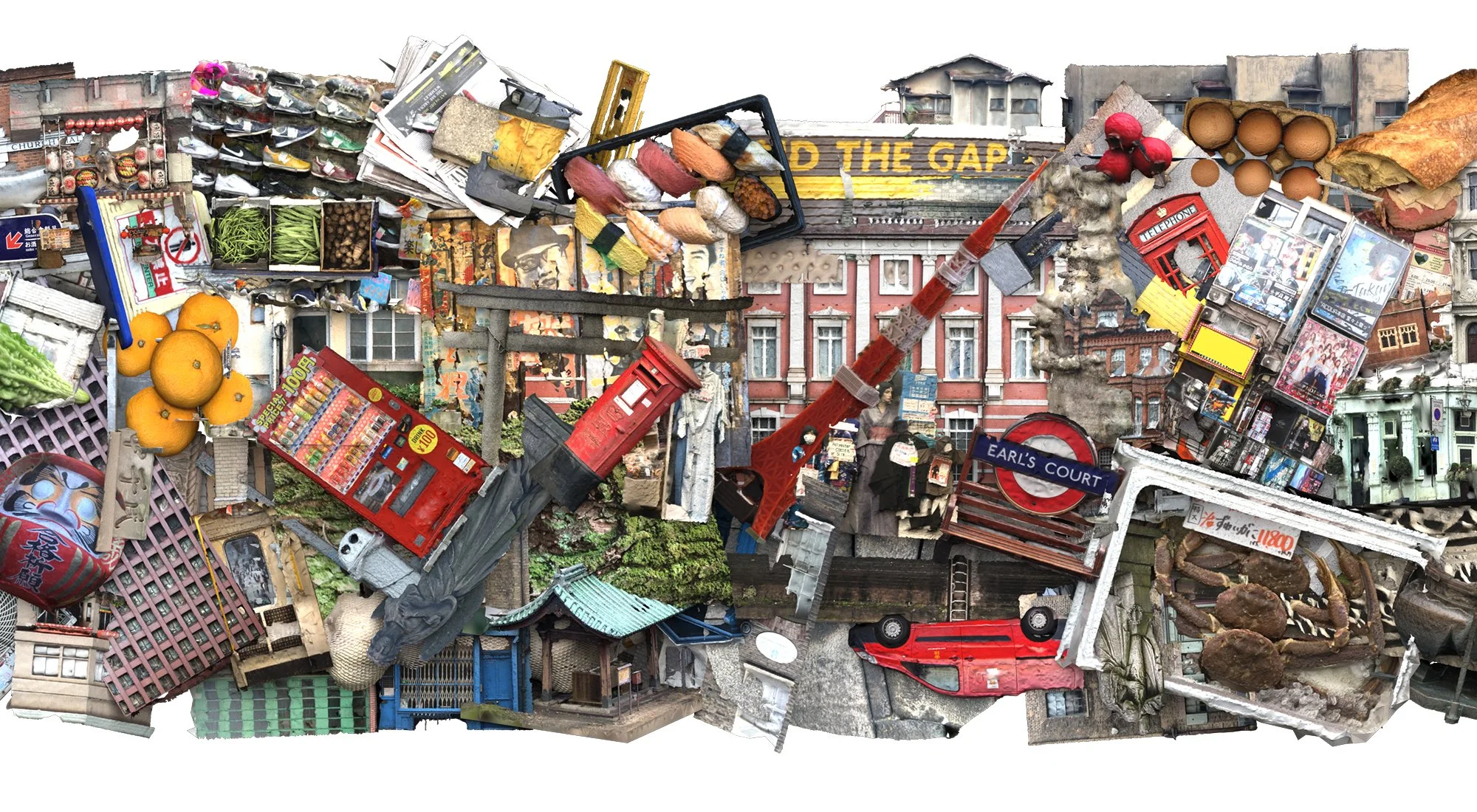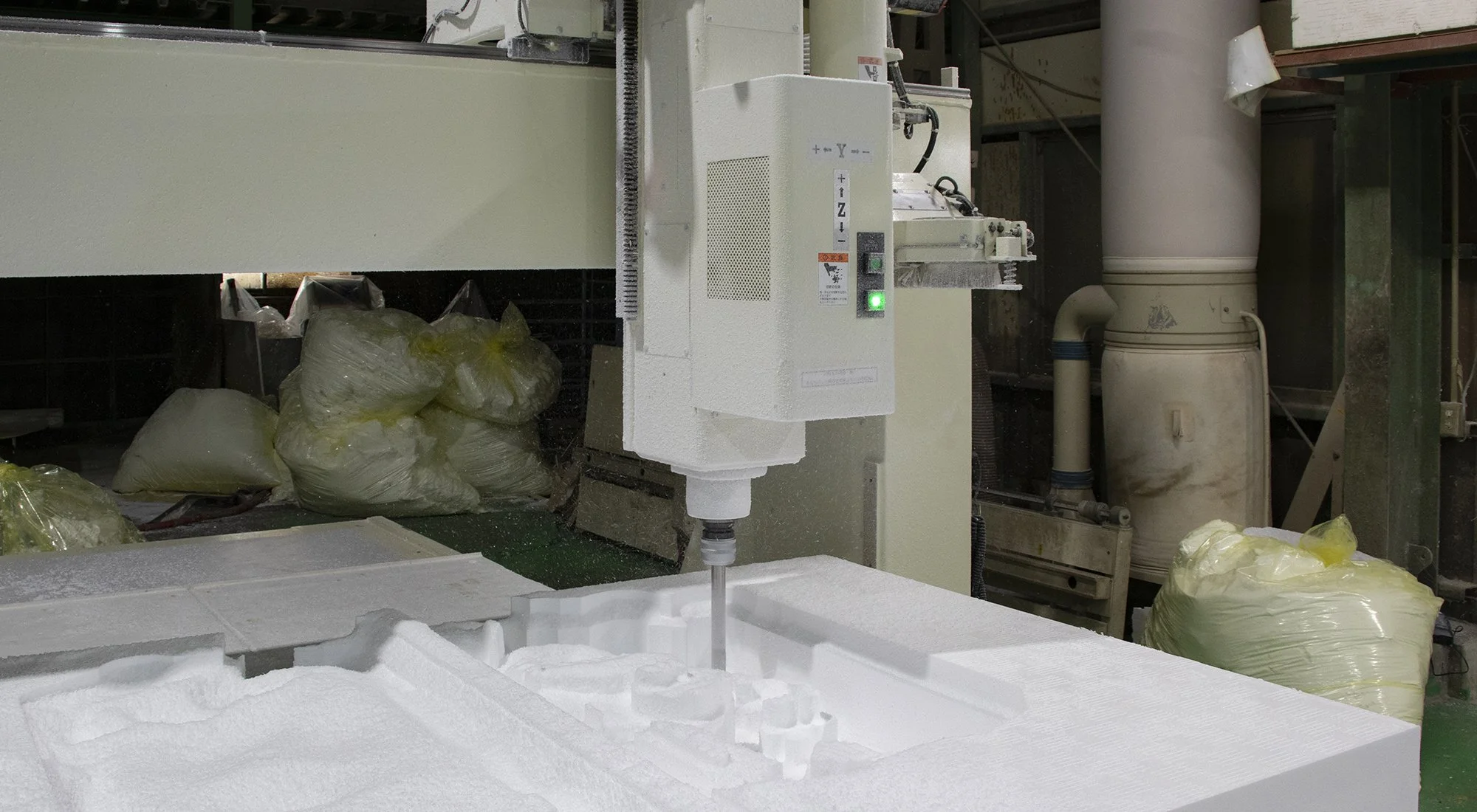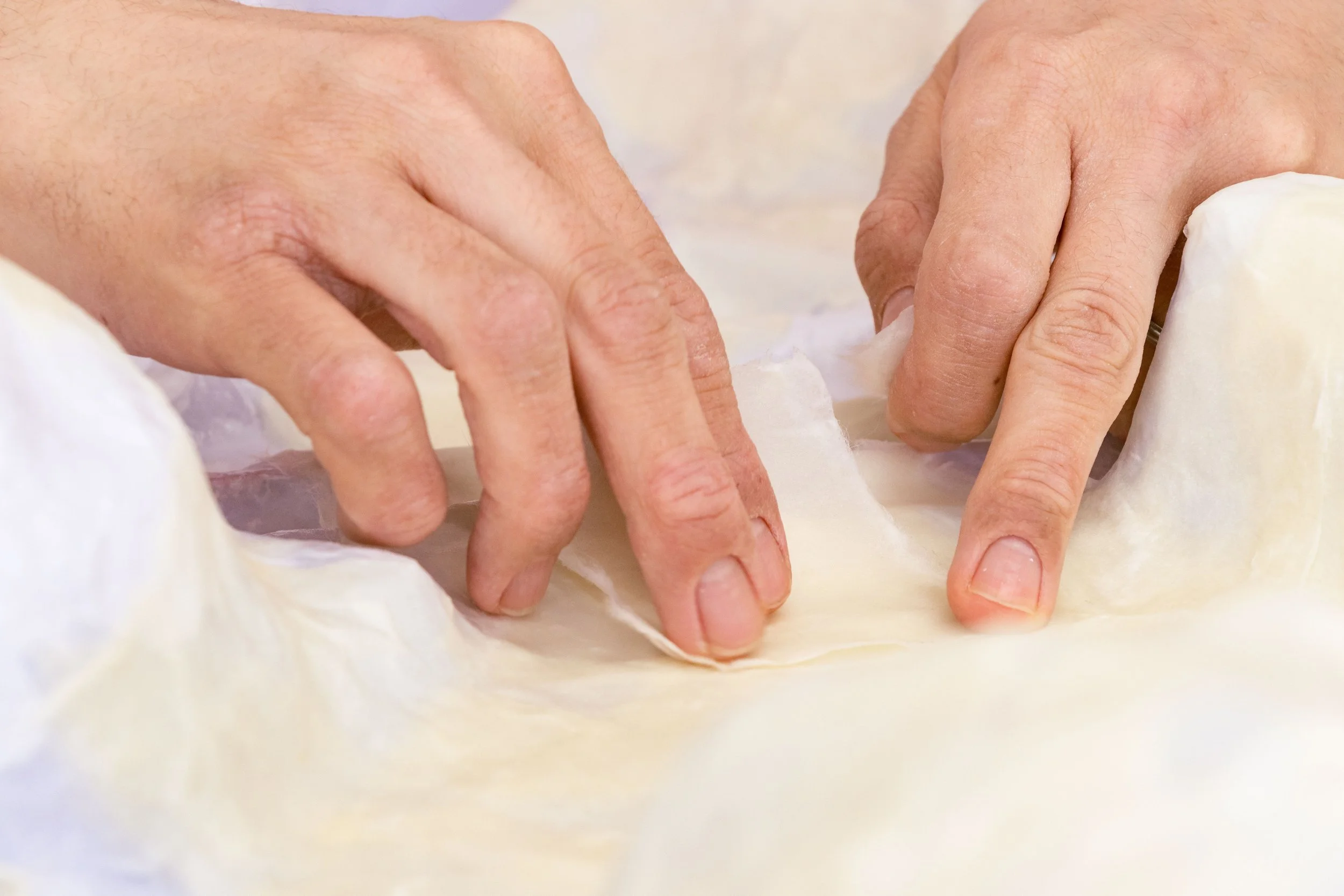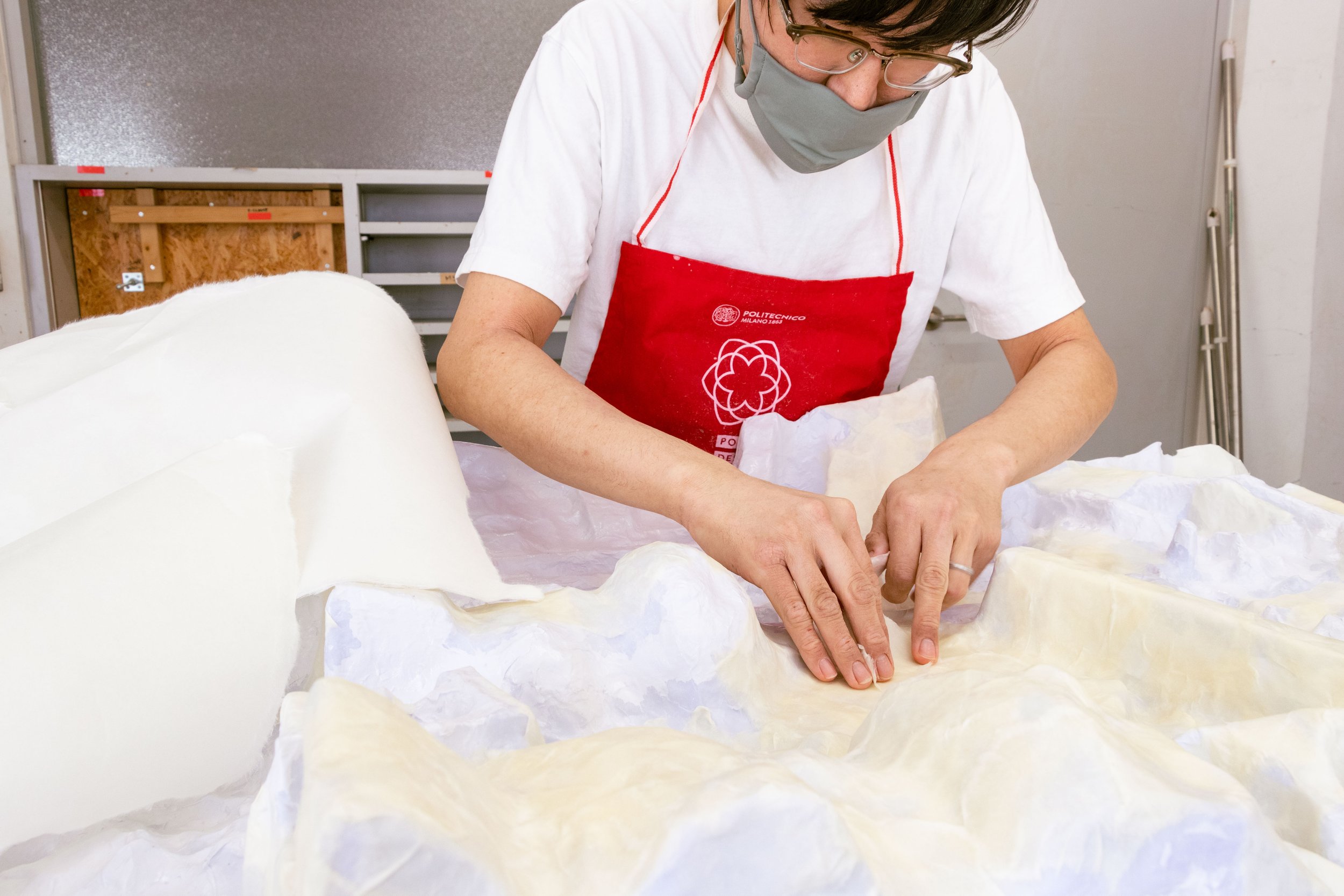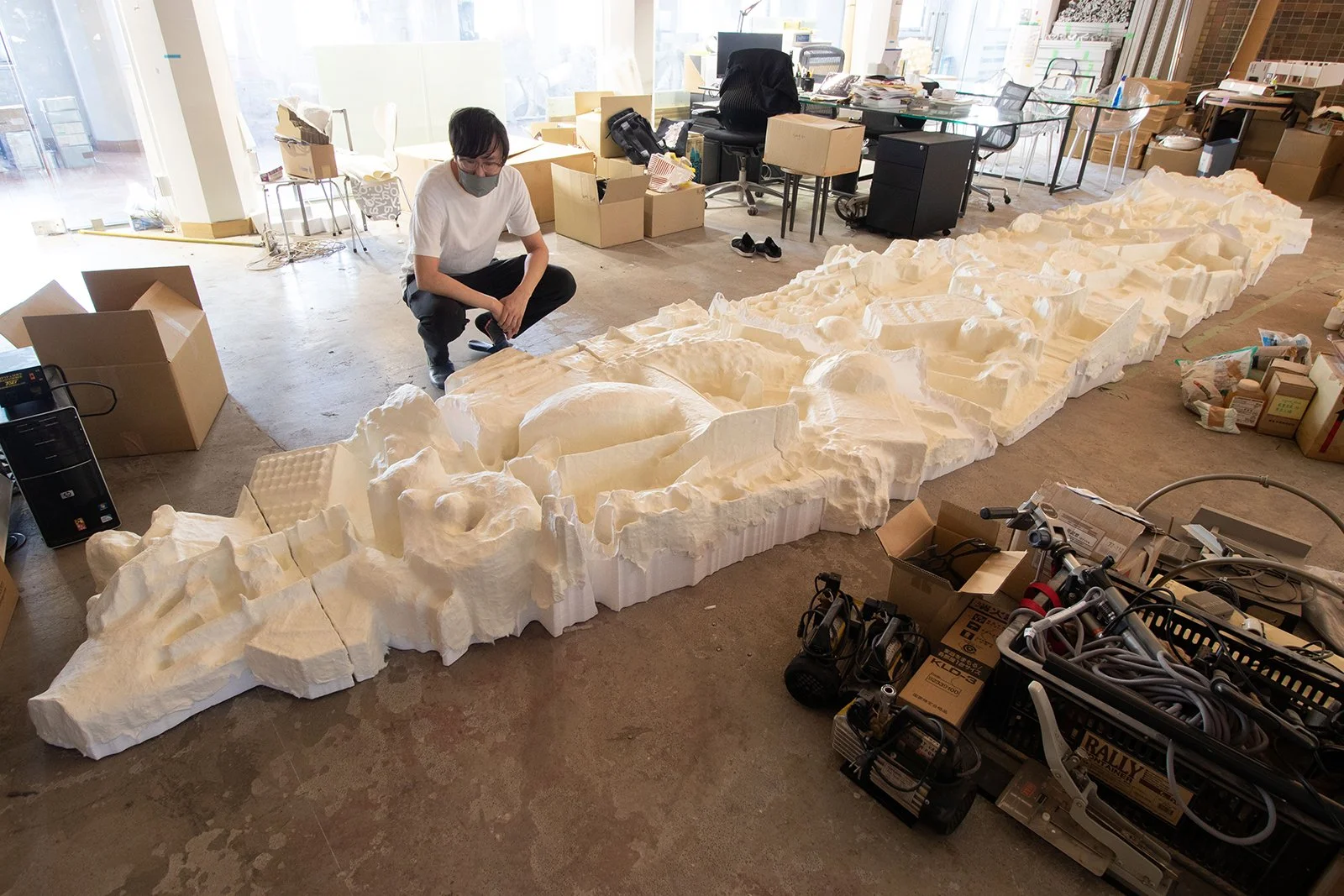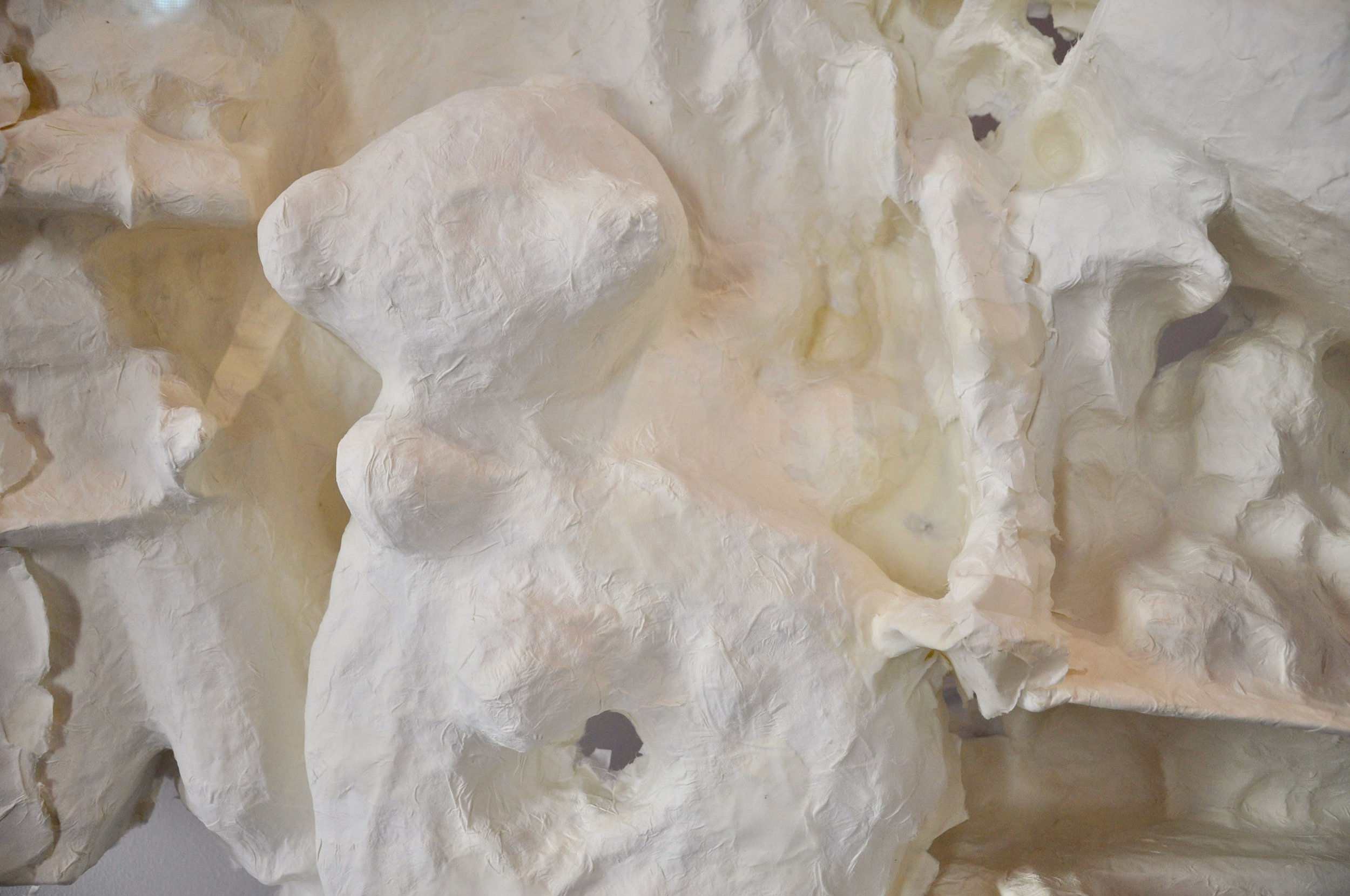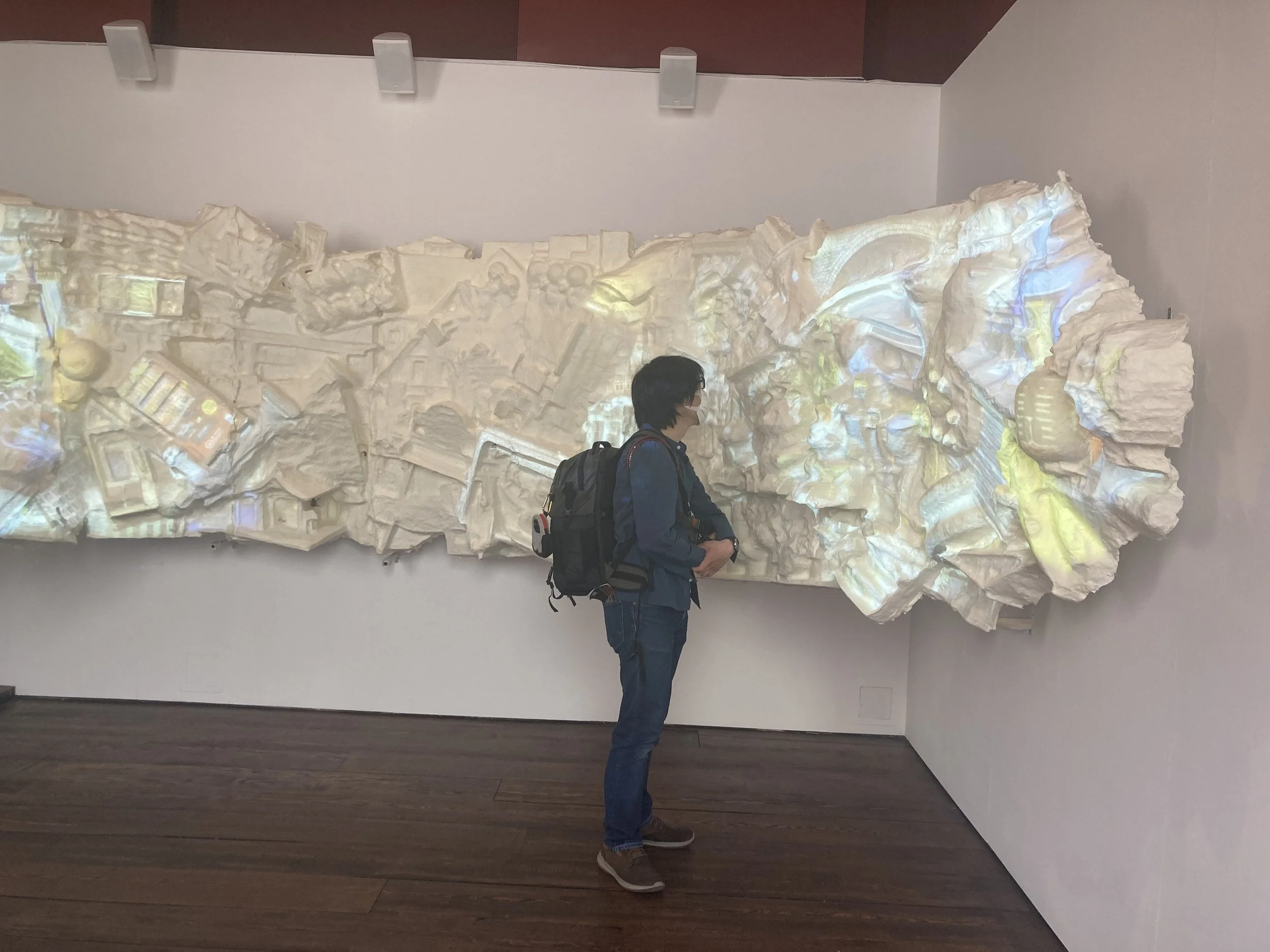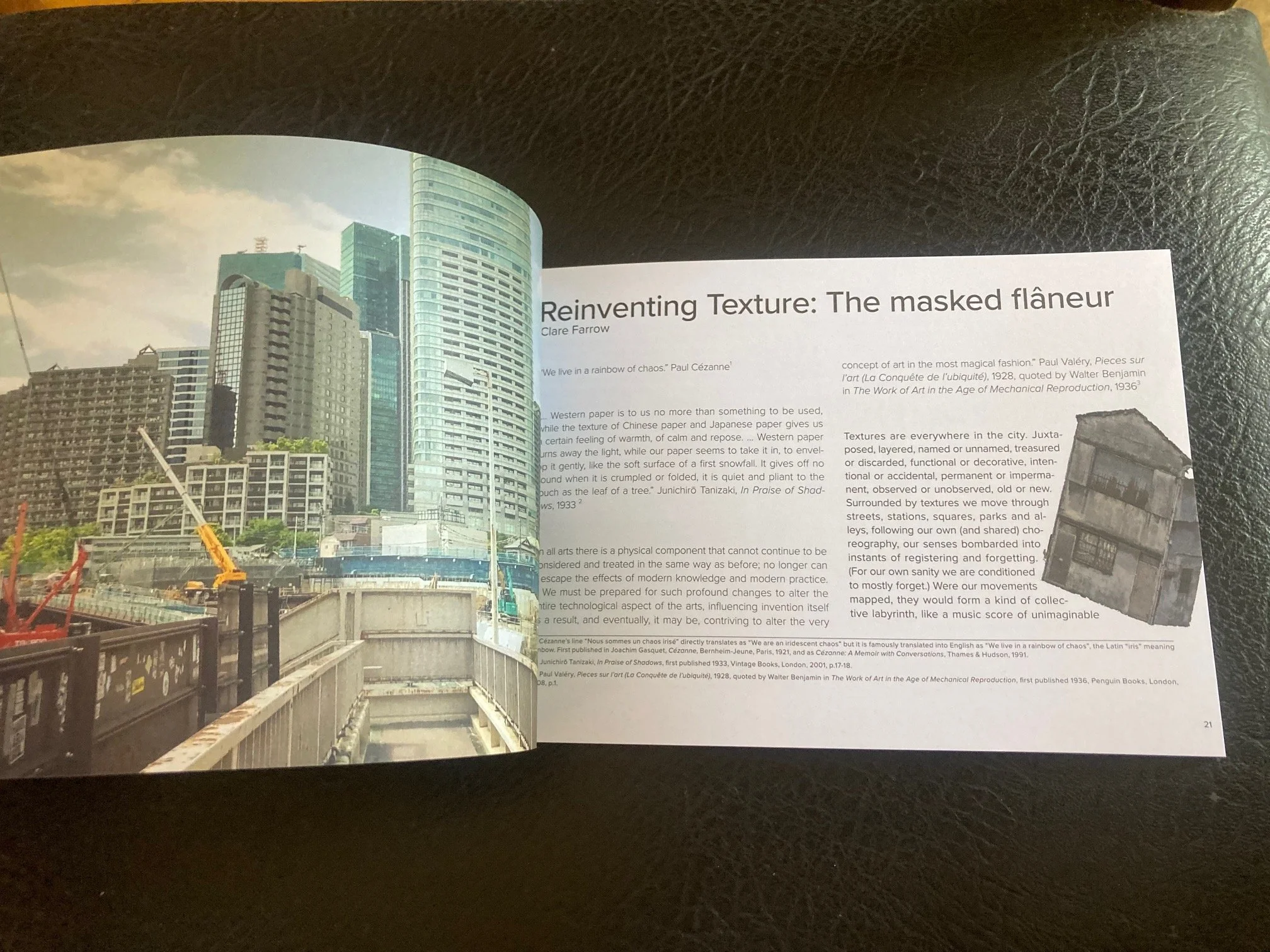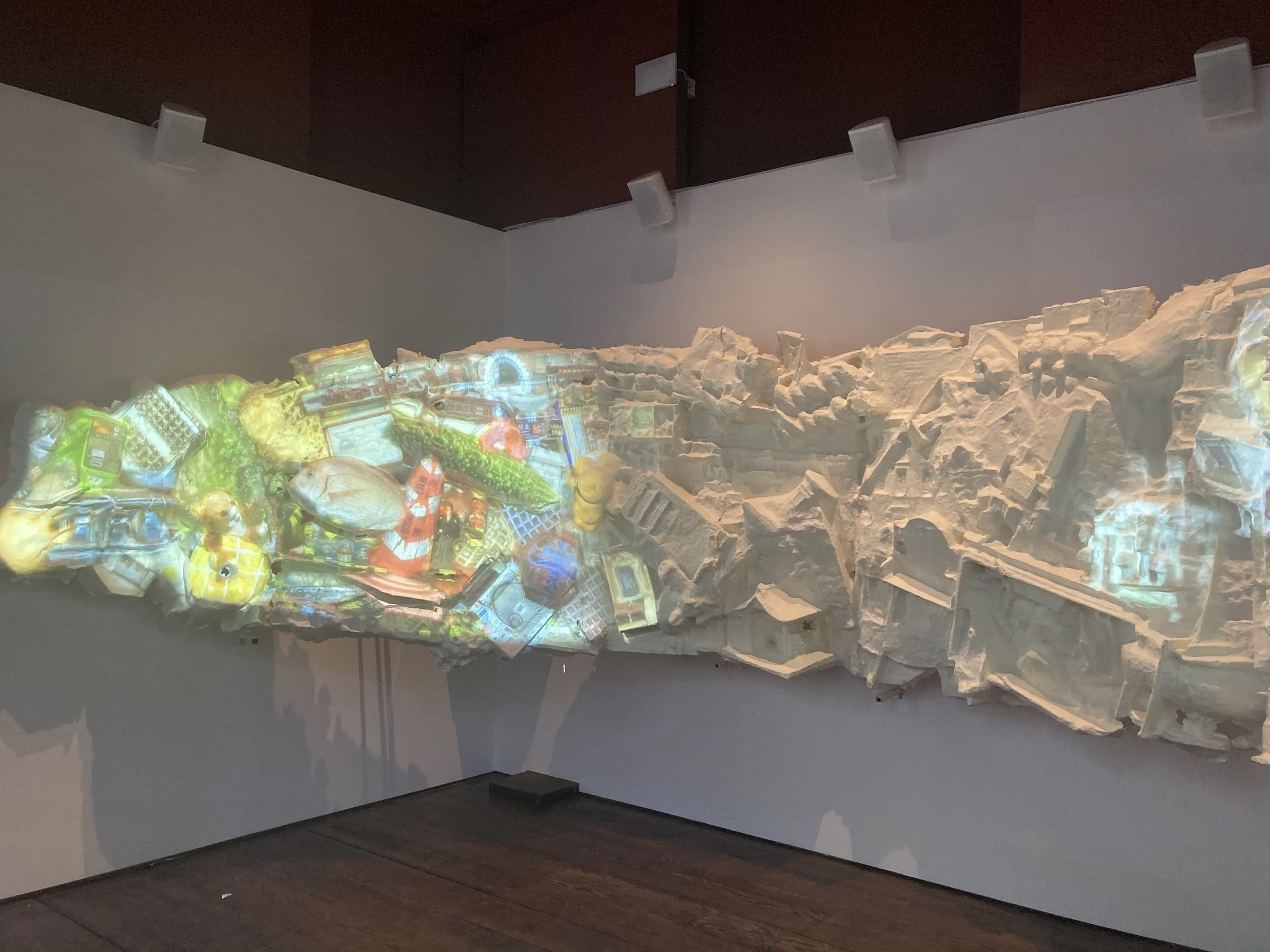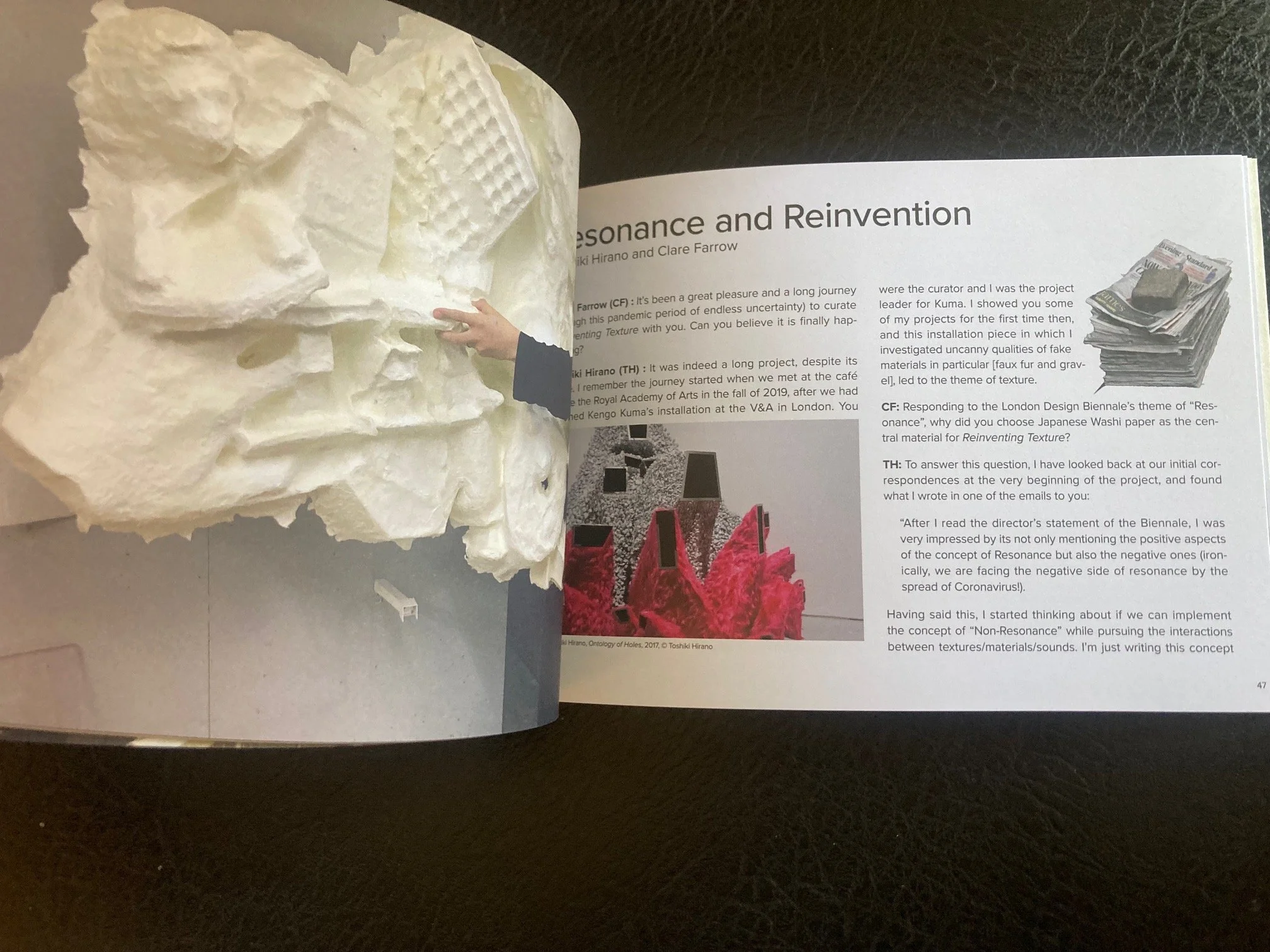Reinventing Texture by Toshiki Hirano
A pavilion of friendship in Somerset House, designed and made by Japanese architect and academic Toshiki Hirano, “Reinventing Texture” (1 - 25 June 2021) pays homage to the ancient art of Japanese Washi paper-making and papier-mâché, through a sensory experience that connects traditional craft to advanced technology, and Tokyo to London.
Initiated and curated by Clare Farrow Studio, this experimental project was developed in response to the London Design Biennale theme of ‘Resonance’, chosen by artistic director Es Devlin, and to the Covid-19 pandemic, which emptied cities and prevented touch. Hirano became a solitary flâneur, wandering the streets of Tokyo with his camera, and a modern surrealist vision.
*Some Limited Edition Colour Prints on Washi paper (Signed) and Catalogues are still available: Please see below for details.
Main Sponsor: KP Acoustics.
Support: Supported using public funding by the National Lottery through Arts Council England, Arts Council Tokyo (Tokyo Metropolitan Foundation for History and Culture) and Japan Foundation.
Further support: Awagami Factory; Daiwa Anglo-Japanese Foundation; Japan Airlines (JAL); POLA Art Foundation; Nomura Foundation; The Great Britain Sasakawa Foundation; The Japan Society; UNION Foundation For Ergodesign Culture.
Exhibition Introduction:
“Reinventing Texture” is an experimental immersive installation that resonates with traditional and modern urban textures, objects and sounds in the cities of Tokyo and London, in response to COVID-19. It is also a pavilion of friendship, connection and shared innovation between Japan and the UK, at a time when travel has been restricted and physical barriers reinforced. A homage to the ancient Japanese art of Washi paper-smaking and papier-mâché, “Reinventing Texture” celebrates texture without touch, and is a poem to the two cities and the spirit of invention in Japan that still resonates with its history.The project began at a London café in 2019. Through his role as Assistant Professor in the experimental Kuma Lab at The University of Tokyo, architectural designer Toshiki Hirano had worked closely with interdisciplinary curator Clare Farrow on developing “Bamboo Ring” by Kengo Kuma for London Design Festival at the V&A Museum.
Amongst the sounds and smells of a bustling café, their discussion turned to material traditions and innovations, and Hirano shared photographs of his own work – playful, unexpected juxtapositions of materials, colours and textures, layered with philosophical thought. The images stayed in Farrow’s mind and resulted in the Biennale invitation, to reinvent texture through sensory experience. A few months later, the pandemic changed everything, including Hirano’s plans.
Inspired by German philosopher Walter Benjamin’s writings on urban space, and Japanese artist Tomoharu Makabe’s 1970s work “Urban Frottage”, Hirano became a collector walking in the streets of Tokyo, photographing textures and objects that could be transformed using innovative digital scanning and fabrication technology, into moulds for a hand-crafted, papier-mâché wall relief.
At the same time in 2020, Hirano was also running virtual Photogrammetry workshops at the Royal College of Art in London for MA Interior Design students, who donned their masks and become collectors of urban textures too. They also made field recordings for the immersive and interactive sound collage created by MSCTY Studio in Tokyo and designed by Panos Tsagkarakis, sound researcher for KP Acoustics.
See further details on Toshiki Hirano’s platform THD (Theoretical Hold Design) and his film of the creative process, involving many hours of photography, photogrammetry, the digital making of moulds, and more than 200 hours of solitary handcraft in the KUMA LAB, The University of Tokyo.
There is a haunting quality to the soft-layered, creamy-white Washi relief, which plays with multiple scales, myriad textures and projections like illuminated watercolours. Created by technology, but also by Hirano’s meticulous layering of paper by hand, “Reinventing Texture” is a journey without touch, yet still a meeting of people and cities.
Selected Press:
RIBA Journal, ‘Toshiki Hirano’s papier-mâché pavilion of friendship’, 14 June, 2021
designboom, ‘Toshiki Hirano on reinventing texture’, 8 June 2021
To order a copy (21 x 15 cm, Washi cover) of the 72 pp signed limited edition catalogue for £20 incl.p&p, please get in touch.
Supported by Japan Foundation.
Contents:
Introduction p3
‘Aesthetics of (in)excess’ Toshiki Hirano pp 17-19
‘Reinventing Texture: The Masked Flaneur’ Clare Farrow pp 21-41
‘Mass Observation and Public Space’ Vicky Richardson p.43
‘Resonance and Reinvention’ Toshiki Hirano and Clare Farrow pp 47-57
‘The Soundscape of Tokyo and the Power of Mismatch’ Toshiki Hirano and Nick Luscombe pp 59-65
Full Colour Illustrations.
Copies are also available without the Handmade Washi Paper Cover for £15 incl.p&p. A simple white cover only.
Designer: Toshiki Hirano, Architectural Designer and Project Assistant Professor, The University of Tokyo
Curator: Clare Farrow, Interdisciplinary Curator and Writer, Clare Farrow Studio, London
Partners: MA Interior Design at the Royal College of Art and MSCTY Studio. With special thanks to Professor Graeme Brooker, Vicky Richardson, and MA Interior Design students at the Royal College of Art, London: Caroline Bang; Rita Louis; Lu Yan; Vanda Hajizadeh; Zhengxiao Wang; Liuxi Lin; Lisa Breschi; Yajing Ding, Ken Man and Xihe Chen
Sound Collage: Nick Luscombe and James Greer
Interactive and Sound Design: Panos Tsagkarakis, KP Acoustics
Supporting body: Sekisui House – Kuma Lab, The University of Tokyo
Main Sponsor: KP Acoustics
Supporters: Supported using public funding by the National Lottery through Arts Council England; Arts Council Tokyo (Tokyo Metropolitan Foundation for History and Culture); Awagami Factory; Daiwa Anglo-Japanese Foundation; Japan Airlines (JAL); Japan Foundation; POLA Art Foundation; Nomura Foundation; The Great Britain Sasakawa Foundation; The Japan Society; UNION Foundation For Ergodesign Culture
